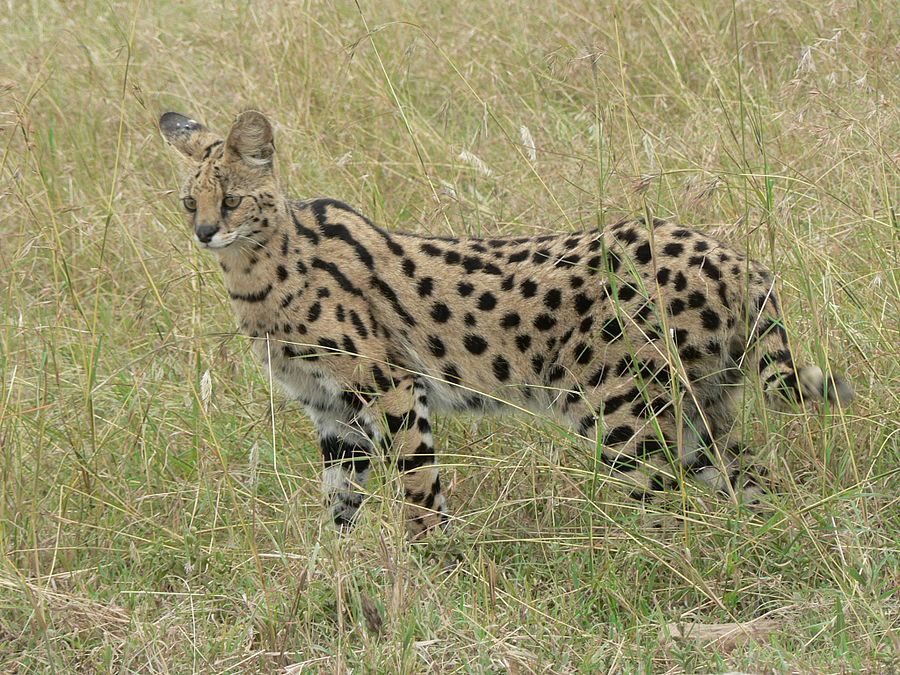Facts About Serval
The serval is a wild cat native to Africa, predominantly inhabiting the sub-Saharan region while avoiding rainforest areas. Classified as "Least Concern" on the IUCN Red List, the serval is not currently at risk of extinction. First described by von Schreber in 1776, the serval belongs to the genus Leptailurus and has three recognized subspecies. This medium-sized feline is easily identifiable by its slender body, elongated legs, large ears, and striking coat that ranges from golden-yellow to buff, adorned with black spots and stripes.
Servals exhibit significant adaptability, being active both during the day and at night. They are typically solitary animals, interacting primarily during mating seasons. Each serval maintains its own territory, marking boundaries with feces and saliva to deter intruders. As carnivores, their diet includes rodents, small birds, frogs, insects, and reptiles. Their exceptional hearing enables them to locate prey with remarkable precision.
Mating for servals usually occurs once or twice a year. Following a gestation period of two to three months, the female gives birth to a litter of one to four kittens, which stay with their mother for about a year before becoming independent.
Servals are found in various protected areas across Africa, and hunting them is either banned or strictly regulated in many countries. Nevertheless, they still face threats such as habitat loss, the illegal fur trade, and conflicts with livestock farmers. Conservation efforts focus on habitat preservation and enforcing hunting regulations to ensure the species' continued survival.
Understanding the serval's unique features, behaviors, and the challenges they face is crucial for their conservation. These fascinating wild cats play an essential role in Africa's ecosystem, and ongoing efforts are vital to maintaining stable populations.

 South Africa
South Africa